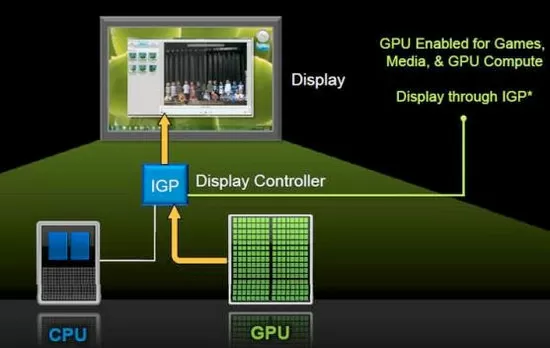Nvidia plans to launch the desktop version of its Optimus graphics switching technology at Computex this coming June in Taipei, according to a report on VR-Zone. Dubbed Synergy, the technology will initially work on Sandy Bridge boards carrying Intel H61, H67 or Z68 chipsets, and unlike with SLI, motherboard vendors won't need to pay a licensing fee or sign an agreement to implement Synergy graphics switching in their products.
As you'd expect the technology will only work with discrete graphics cards from Nvidia. Basically, Synergy will work much in the same way as Optimus does in notebooks, allowing dynamic swapping between the integrated GPU in Sandy Bridge processors and an installed GeForce graphics card depending on the task being executed.

For example, the Intel HD graphics core will be used when doing light work like browsing or writing documents, while the GeForce card will kick in when gaming and running benchmarks. Video playback and encoding will be handled by Intel's Quick Sync technology that's built onto Sandy Bridge-based processors.
The result should be lower power draw and a quieter system. Users will also be able to manually switch between integrated and discrete graphics on the fly, or set up profiles to switch when a particular application or game is launched.
It's worth mentioning that a similar technology already exists for desktops in the form of LucidLogix's Virtu. The latter is compatible with both Nvidia and AMD graphics cards but requires motherboard vendors to pay a licensing fee. Nvidia's technology apparently won't require any hardware tweak or cost motherboard makers a thing.
https://www.techspot.com/news/43460-nvidia-optimus-technology-to-arrive-for-desktops-as-synergy.html